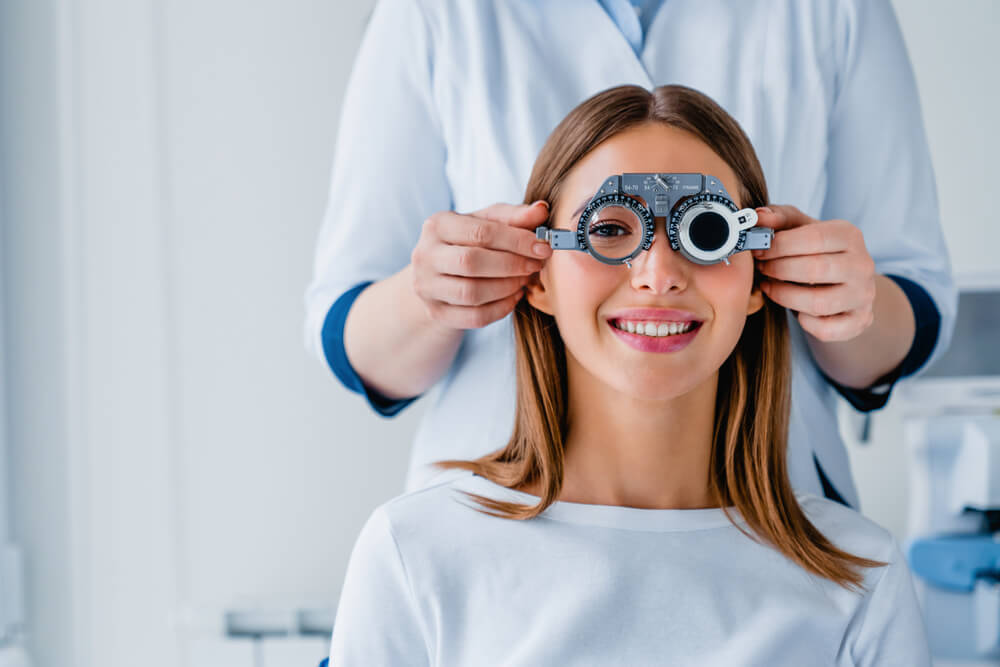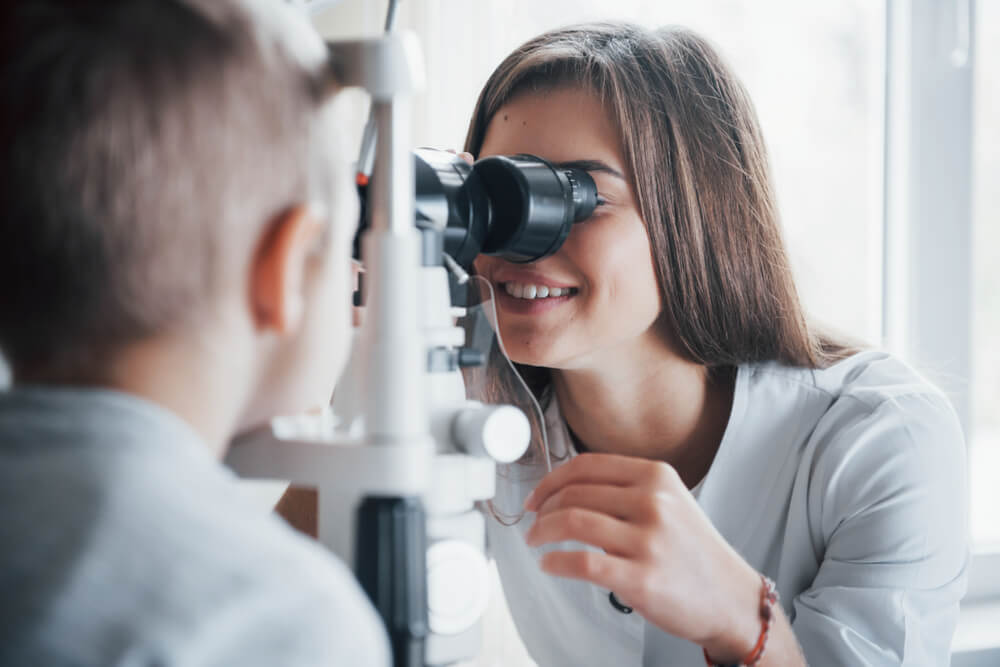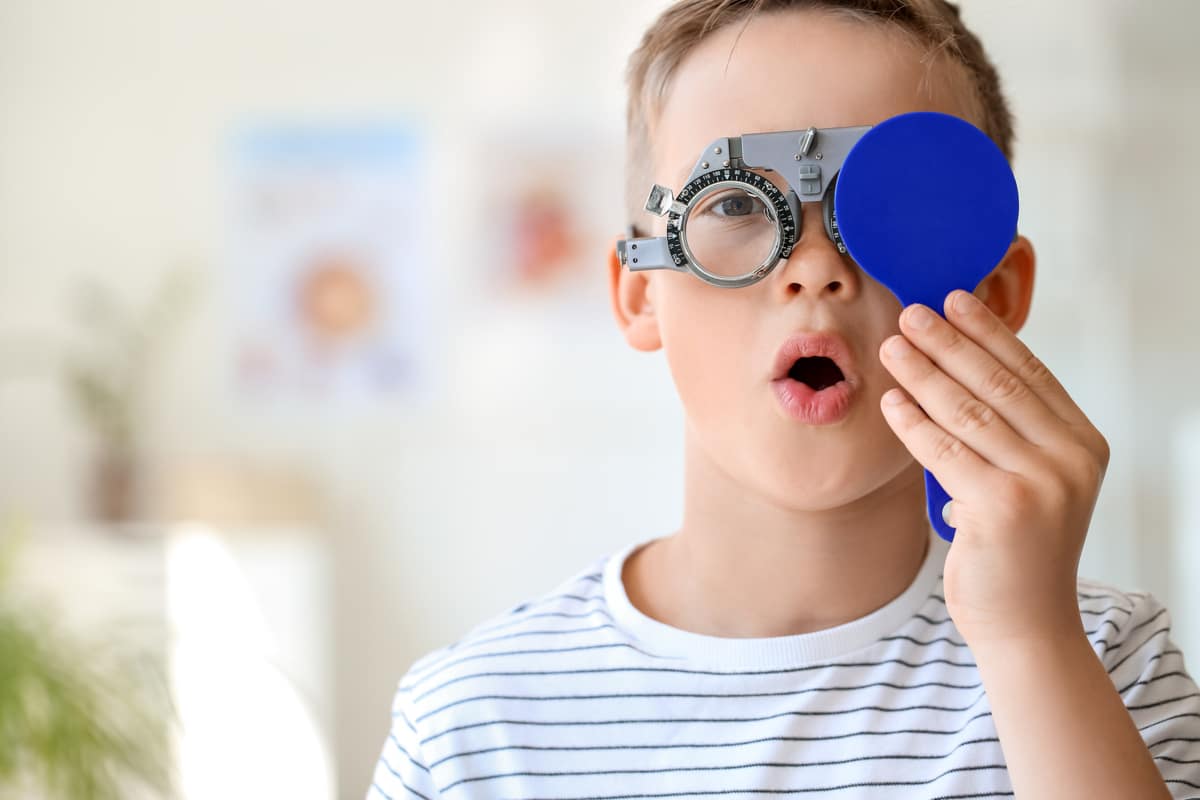Depending on your unique visual needs, several eye types of eye tests may be performed during your eye exam. The eye tests that are completed during your eye exam depend on your age, medical history, and any symptoms you’re experiencing. These tests are a vital tool in the diagnostic process, and can help detect various eye diseases and conditions. While all of the tests performed on you during an exam can be intimidating, knowing what to expect can help to relieve some anxiety. Here’s an in-detail explanation of the different types of tests you may get done at your next exam.

Retinal Photography
A retinal image takes a high-resolution image of your retina, optic nerve, and blood vessels. This test can help detect various eye conditions, including age-related macular degeneration, diabetic retinopathy, glaucoma, and other retinal disorders.
During a retinal scan, your eye doctor will dilate your pupils, which allows for a better view of the back of your eye. You’ll then be asked to look into a device that takes the image of your eye. The procedure is painless and typically takes only a few minutes to complete.
Retinal scans are a valuable tool in eye care, as they can help detect eye conditions early on, when treatment is most effective. They are significant for people with any family history of eye disease and those over the age of 60.
Optical Coherence Tomography
Optical coherence tomography (OCT) is an imaging test that may be performed during an eye exam to capture high-resolution images of the retina and other structures inside the eye. OCT uses light waves to create detailed cross-sectional images of the eye, allowing eye doctors to visualize and evaluate the layers of the retina and detect early signs of eye diseases such as glaucoma, macular degeneration, and diabetic retinopathy.
During the OCT exam, you’ll be asked to place your chin on a chin rest, and a special camera will take images of your eye. The procedure is painless and takes only a few minutes to complete.
OCT is beneficial for detecting subtle changes in the retina that may not be visible during a routine eye exam. It can also help monitor the progression of eye diseases over time and evaluate the effectiveness of treatment.
Refraction
An auto phoropter is a computerized instrument that the doctor uses to determine the refractive error and determines the appropriate eyeglass prescription. The auto phoropter replaces the traditional manual phoropter, which requires the eye doctor to adjust lenses manually by the dial to determine the best prescription for your eyes.
During a refraction, you will be asked to sit behind the instrument and look at an eye chart. The doctor will present a series of lenses and adjust them until the optimal prescription is found. You will be asked to provide feedback on which lenses provide the clearest and most comfortable vision.
Auto phoropters are often preferred over manual phoropters because they can provide a more precise measurement of refractive error. They can also speed up the eye exam process and reduce the time spent manually switching lenses.
Visual Fields
A visual field test is a type of eye exam that measures your peripheral vision. It’s used to diagnose a variety of eye and neurological conditions, including glaucoma, macular degeneration, and brain tumors.
During a visual field test, you will sit in front of a machine with a dome-shaped instrument that flashes lights in different areas of your field of vision. You will be asked to press a button or raise your hand when you see the flashes of light. The machine will create a map of your visual field, which your eye doctor will use to evaluate your peripheral vision.
Visual field tests are important for detecting changes in your vision that may indicate an eye or neurological condition. They are particularly important for people with a family history of eye disease, those over 40, and those who have experienced vision changes or abnormalities.
Learning About the Types of Eye Tests Available

Depending on your needs and concerns, your eye doctor may perform additional tests or procedures during your exam. It’s important to discuss any concerns or questions you have with your eye doctor to ensure that you receive the most appropriate and comprehensive care for your vision health.
If you’re ready to learn about what type of eye tests will be best for your health, schedule an appointment today.




